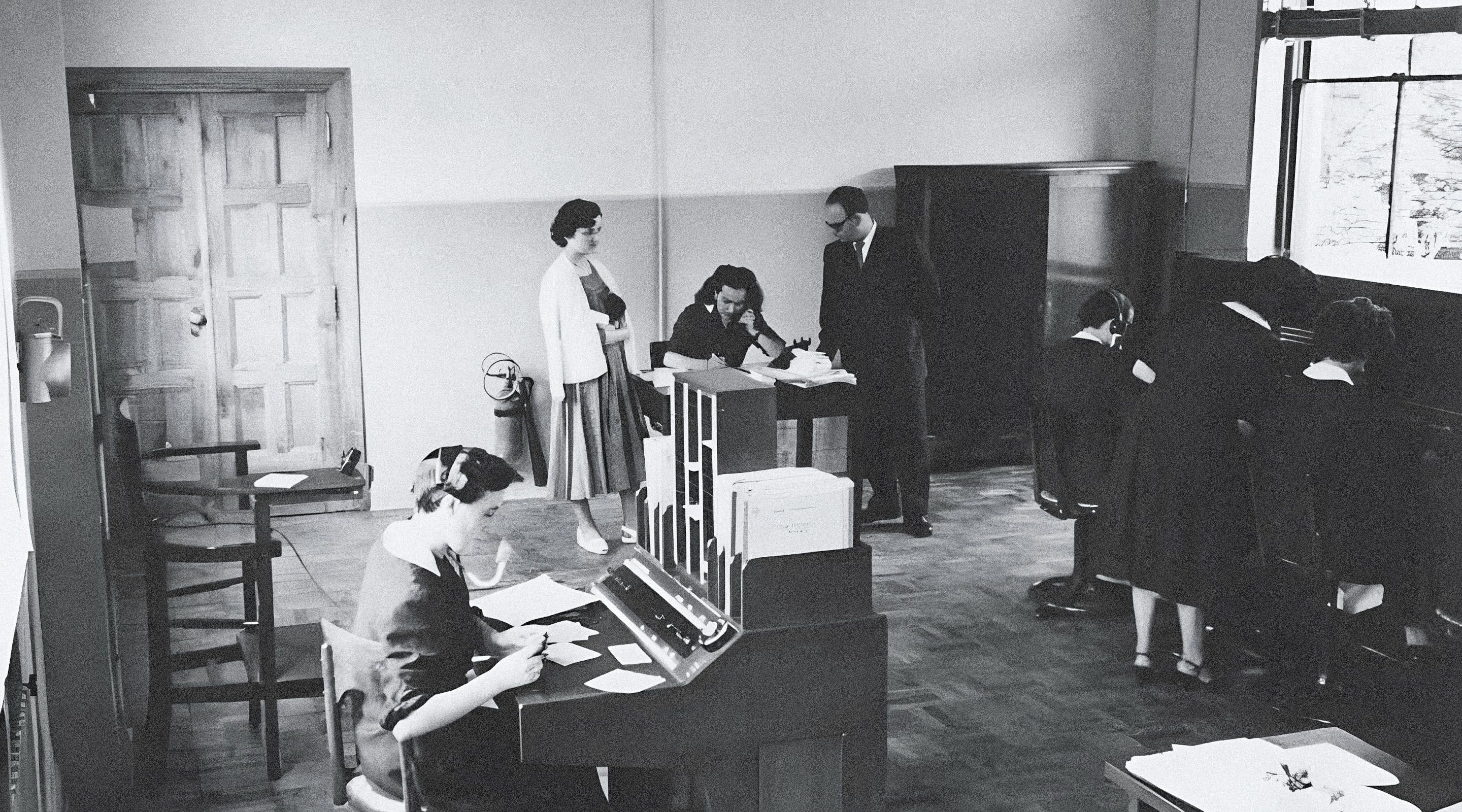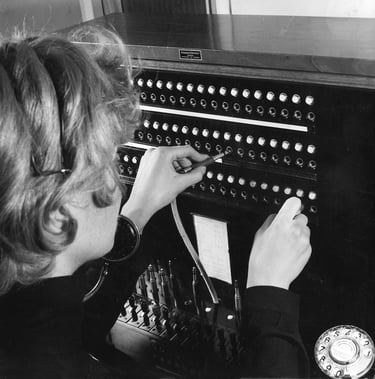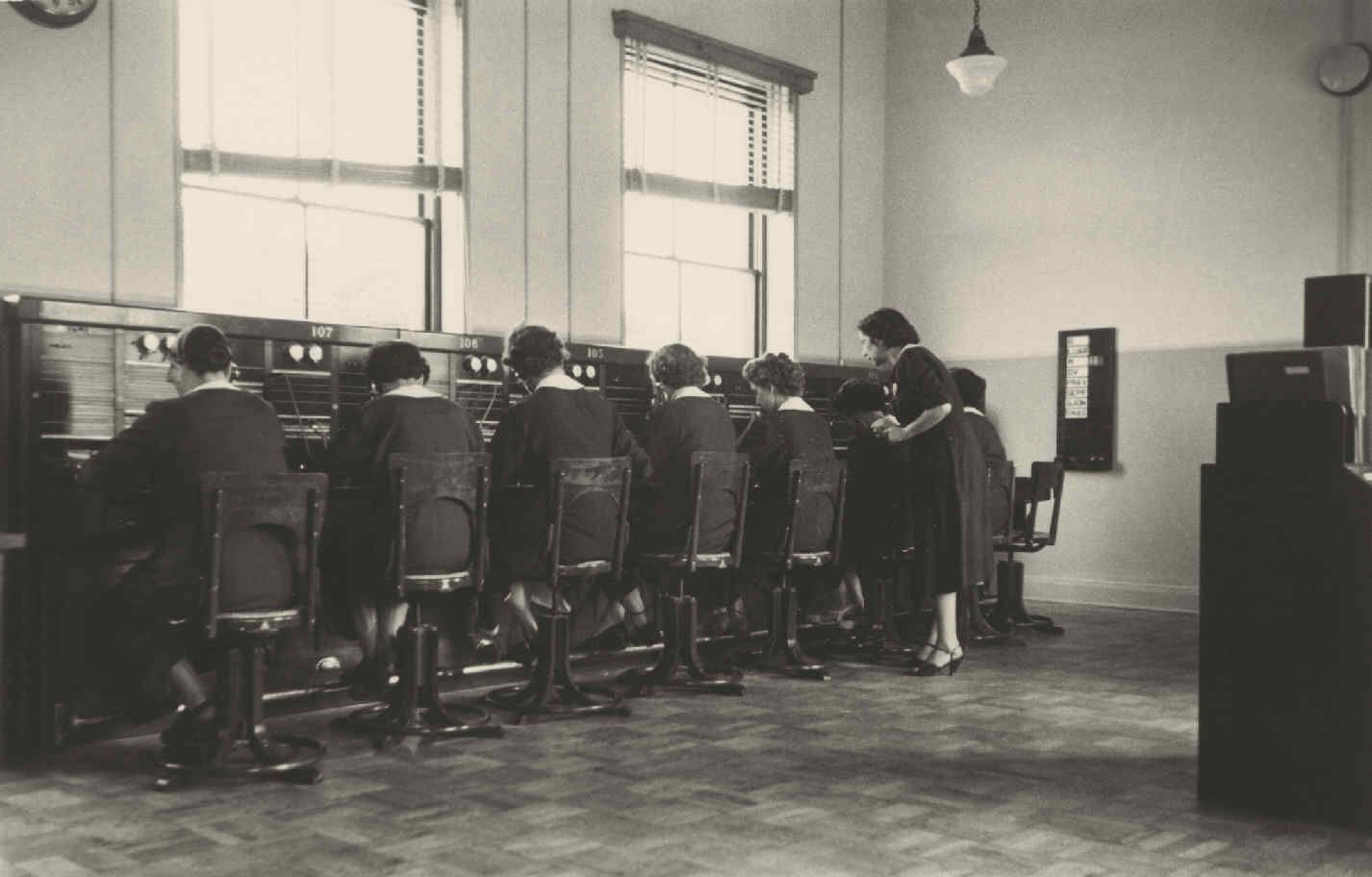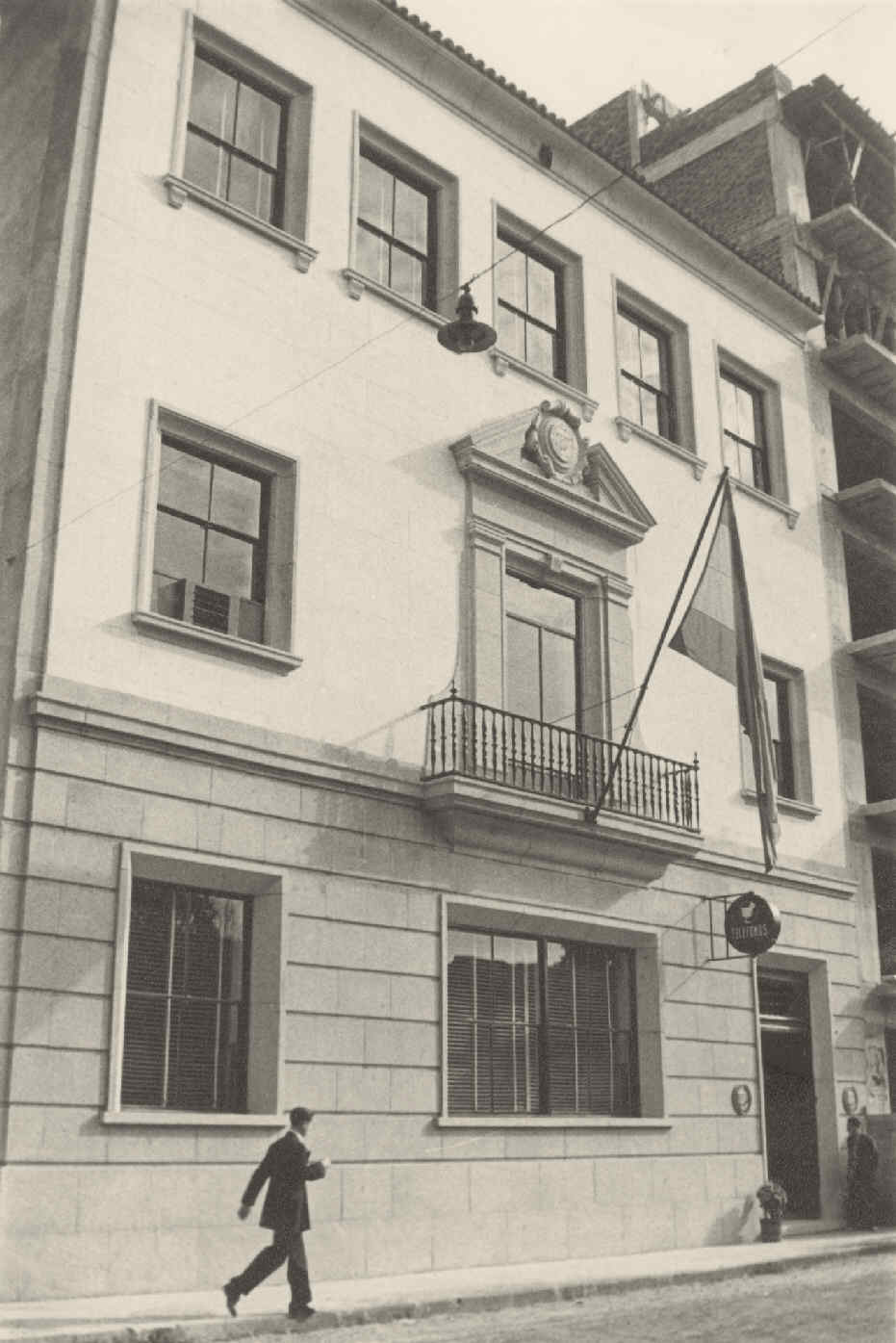
1953

A team of more than 17,000 professionals makes the CTNE the first private employer in Spain. The coaxial cable technology is adopted for the main transmission lines and modulation radio links begin to be tested.
Radio links arrive
01
We installed the first microwave radio link in Spain between Madrid and El Escorial. We had to wait four years, until 1957, to have the first high capacity one, the Madrid-Seville route, which was later extended to Tangier. Thanks to modulation techniques, it was able to send 96 circuits initially, although it was prepared to reach 600 and, with the help of other equipment, up to 3,600 simultaneous communications.

Subscriber-to-subscriber calls
02
We make a qualitative leap in automation by installing equipment in the provincial exchanges that allowed direct subscriber-to-subscriber dialling, without the intervention of the operator. The inauguration of the integral automatic service at the Guipúzcoa exchange in January is noteworthy. With 11,550 lines, this state-of-the-art installation allows subscriber-to-subscriber dialling from different towns. This service was extended in 1953 to Barcelona and Badalona.

We are the largest private employer in the country
03
By 1953 the number of employees already exceeded 17,000, making the company the largest private employer in the country. All the more reason to further boost social policy, ranging from a new health insurance scheme to the creation of holiday homes for staff.

We surpass 1 billion in revenues
04
Telefónica's accounts continued their upward trend: revenues were close to the desired 1,000 million pesetas (just over 6 million euros), a growth of 14% over the previous year, and net profits reached 272 million pesetas (over 1.5 million euros).

Do you have doubts about what happened?
Ask Aura